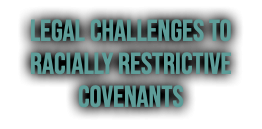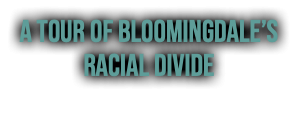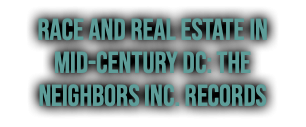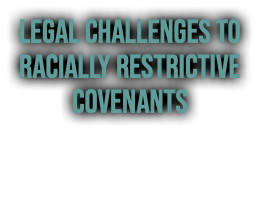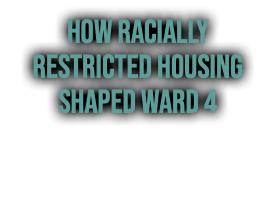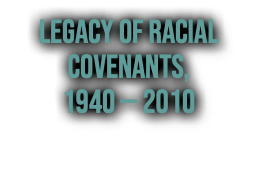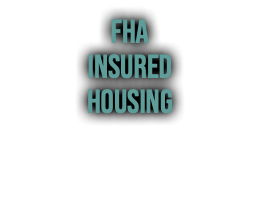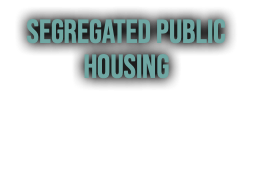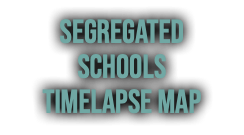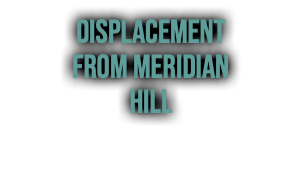Mapping Segregation
in Washington DC







Auction of 136 Adams Street NW, 1941
Moorland-Spingarn Research Center, Howard Univ.
Petworth, late 1920s
Library of Congress
DC Public LIbrary
Charles Hamilton Houston, 1931
Scurlock Studio Records, Archives Center, National Museum
of American History, Smithsonian Institution
The Neighbors, Inc. Records
DC Public Library
Sign advertising new subdivision, 1930
DC Public Library
Used with the permission of the Baltimore Afro-American
<
>
Mapping Segregation
in Washington DC
From Restrictive Covenants
to Racial Steering
A Special Exhibit on
the Fight for Fair Housing in Washington DC
This exhibit was launched in 2018 to mark the anniversaries of several milestones in the history of fair housing.
May 3, 1948. The U.S. Supreme Court ruled in Shelley v. Kraemer that the enforcement of racially...
restrictive deed covenants was unconstitutional. Attorney Charles Hamilton Houston argued and
won a DC companion case, Hurd v. Hodge.
November 1948. The National Committee on Segregation in the Nation’s Capital published...
Segregation in Washington, detailing the profound social and economic impacts of racist housing policies in DC.
June 1958. DC residents organized Neighbors, Inc. to combat racial steering and white flight.
April 11, 1968. President Lyndon B. Johnson signed the Civil Rights Act of 1968. Title VIII, known...
as the Fair Housing Act, prohibited most forms of racial, ethnic, and religious discrimination in the
sale or rental of housing and in mortgage lending.
June 17, 1968. The U.S. Supreme Court ruled in Jones v. Mayer that racial discrimination in the...
sale or rental of property violated the Civil Rights Act of 1866. Almost all conditions under which
discrimination had remained legal under the Fair Housing Act—for example the right of religious
groups or private clubs to discriminate—were thus removed.
This special exhibit has three components.
The Campaign Against Covenants: A Tour of Bloomingdale’s Racial Divide is a guide to key sites in the history of black homeseekers’ efforts to purchase housing restricted to whites. Discover why Bloomingdale’s premier architectural corridor was also a racial barrier, and how civil rights attorneys chipped away at this dividing line in the 1920s–40's. The tour is available in the DC Historic Sites mobile app, which can be downloaded for iOS and Android.
Legal Challenges to Racially Restrictive Covenants maps more than 40 properties that were the subject of lawsuits over the right to freely buy, rent, or convey property. Learn why DC's Bloomingdale neighborhood was central to the NAACP’s national campaign to abolish racial covenants.
Race and Real Estate in Mid-Century DC: The Neighbors, Inc. Records offers a selection of documents that pointedly illustrate how real estate practices combined with other discriminatory policies to facilitate DC’s racial transformation in the 1950s and ‘60s. Most of these come from the DC Public Library.
Covenants Map
Restricted Housing and Racial Change, 1940-1970
About this Map …
Launched in January 2014, Mapping Segregation in Washington DC originally focused primarily but not exclusively on racially restricted housing in the Northwest quadrant of the city east of Rock Creek Park. We had documented racial covenants—which barred the conveyance of property to African Americans—on approximately 11,000 properties as of October 2018, when this website launched.
As of February 2023, we have mapped about 24,000 properties with covenants.
Lots restricted by deed are those for which the seller, generally a real estate developer, included a racial covenant in the property deed. For covenants found on properties developed prior to mid-1921, we checked the building permits and mapped all the properties included in the same permit, provided we could document a covenant for at least one in ten lots per permit. In some cases, we also counted lots as restricted if others in the same subdivision, being sold by the same owner, were found to have covenants. For these lots, the subdivision name is listed in the popup. Current addresses were generated based on the boundaries of each historic lot that had a covenant. In some cases, the historic lots do not match today's lots.
Popups for some lots show the actual covenant language.
Lots restricted by petition are those for which white neighborhood groups gathered signatures from property owners. After these “Agreements” were filed with the DC Recorder of Deeds, the covenants on the signers’ addresses became legally binding.
Properties that do not show a covenant may be properties we haven’t yet thoroughly researched.
Real estate documents filed after mid-1921 are available in the DC Recorder of Deeds’ publicly accessible database, while those filed earlier remain in their original form, in volumes housed at the DC Archives. Data on building permits and subdivisions are at HistoryQuest DC. The DC Office of the Surveyor’s online records and Baist real estate maps were also consulted to determine historic subdivision and lot boundaries. Open Data DC contains shapefiles with the boundaries of all current lots.
Demographic data were collected from the Minnesota Population Center’s National Historic Geographic Information System and the U.S. Census Bureau. Categories of information published by the Census vary from decade to decade; for example, it sorted households by white and nonwhite for 1950 and 1960 but by white and Black for 1970. We have therefore calculated the figures for nonwhite households to make decade-to-decade comparisons more accurate. The Census defines housing with more than one person per room as "crowded," and with more than 1.5 persons per room as "severely crowded." Within each decennial dataset, data are missing for some blocks. The data and shapefiles are downloadable here. Humanities DC funded digitization and mapping of the Census block data.
Story Maps

About the Project
Mapping Segregation in Washington DC reveals the profound role of race in shaping the nation's capital during the first half of the 20th century.
Racially restrictive covenants—which barred the conveyance of property to African Americans—were used by real estate developers and White citizens associations to create and maintain racial barriers. Upheld by the courts, covenants assigned value to housing and to entire neighborhoods based on the race of their occupants, and made residential segregation the norm. Federal policy and local zoning codes served to institutionalize segregation and the displacement of Black residents. As shown in this project’s story maps, segregated housing projects, schools, and playgrounds also helped create exclusively White neighborhoods and concentrate Black residents in areas that were older and overcrowded or remote and less developed.
Although eventually outlawed, racial covenants had a lasting imprint on the city. Their association of Whiteness with higher property values led to decades of disinvestment in areas where most Black residents lived. Their legacy remains visible in the unequal distribution and quality of public resources such as parks, hospitals, and grocery stores and in the persistence of segregated neighborhoods and schools. Finally, by barring Black access to wealth-building through real estate, covenants are behind today’s vast racial wealth gap in DC. By revealing the deliberate harm inflicted on Black Washingtonians via the use and enforcement of racial covenants and racist land use policies, this project is meant, in part, to serve as a resource for redress.
Mapping Segregation is a resource for historians, activists, educators, students, and journalists, and provides essential context for conversations around race and gentrification in DC. The project's maps unveil historical patterns that would otherwise remain invisible and largely unknown. The ongoing, lot-by-lot documentation of racial covenants is set in the context of DC's demographic transformation over the course of several decades. Primary documents, archival news clippings, photographs, and oral testimony also contribute to the stories these maps tell.
Conceived by historians Mara Cherkasky and Sarah Jane Shoenfeld, of Prologue DC, and GIS specialist Brian Kraft, this project has received funding from Humanities DC, the DC Preservation League, and the National Park Service. Kevin Ehrman-Solberg, Michael Corey and Bliss Cartwright provided GIS and data support. Other supporters include the Historical Society of Washington, D.C., All Souls Housing Corporation, the Military Road School Preservation Trust, George Washington University's Center for Washington Area Studies, and Neighbors, Inc.
This website was produced with assistance from the Historic Preservation Fund, administered by the National Park Service, Department of the Interior. Any opinions, findings, and conclusions or recommendations expressed in this material are those of the authors and do not necessarily reflect the views of the Department of the Interior.
Contact


